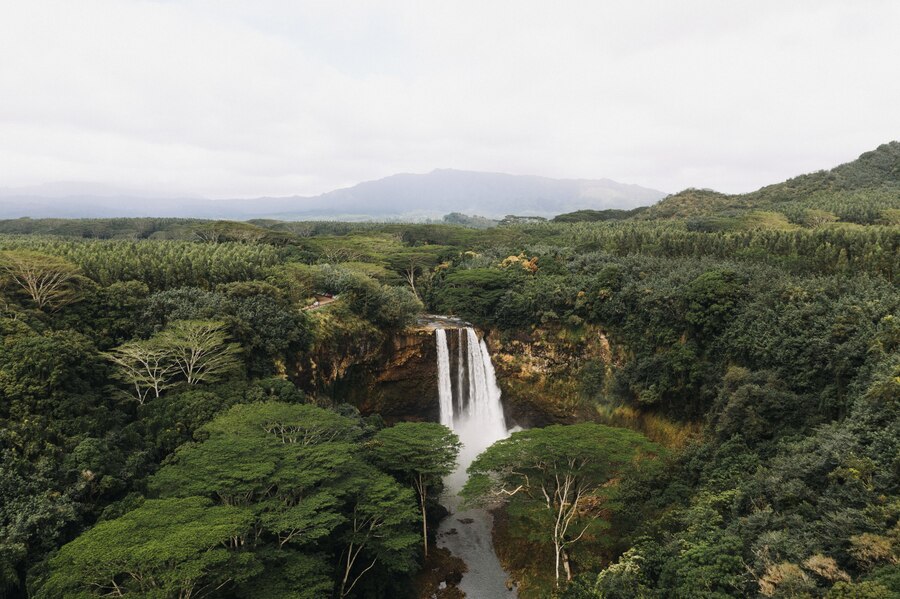
Deforestation in the Amazon: Causes and solutions
The Amazon Rainforest, often called the “lungs of the Earth,” is one of the most biodiverse and vital ecosystems on the planet. Covering around 5.5 million square kilometers, it produces roughly 20% of the world’s oxygen and houses countless plant, animal, and indigenous species. However, the Amazon faces a dire threat from deforestation, which is stripping away its rich biodiversity and destabilizing the climate. Understanding the causes of Amazon deforestation and finding viable solutions is crucial for the health of our planet and future generations.
Causes of deforestation in the Amazon
Deforestation in the Amazon is primarily driven by human activity, as industries and communities expand deeper into the forest to exploit its resources. The most significant drivers include:
1. Agricultural expansion
Agriculture, especially cattle ranching and soybean farming, is a major cause of deforestation in the Amazon. Large areas of forest are cleared to create grazing land for cattle or to grow soybeans, which are used as animal feed worldwide. Brazil, the largest soy producer in the world, has witnessed massive forest areas converted to farmland, with many companies taking advantage of weak enforcement of land-use policies. This agricultural expansion is motivated by high international demand for meat and soy products, making it a profitable industry that continues to push into Amazon territory.
2. Logging (legal and illegal)
Logging, both legal and illegal, contributes heavily to deforestation. Although some logging is authorized under government permits, illegal logging is widespread, with many companies harvesting valuable timber without regard for environmental laws. This logging not only strips the forest of ancient trees but also paves the way for other activities like farming and mining, as cleared land is easier to access. Deforestation caused by logging is particularly damaging because it fragments the forest, disrupting ecosystems and making the land more vulnerable to fires.
3. Mining operations
The Amazon is rich in mineral resources, including gold, copper, and iron. Mining operations often clear large areas of forest to extract these resources, leading to significant habitat loss. In addition to deforestation, mining pollutes rivers and soils with toxic chemicals like mercury, harming both wildlife and indigenous communities. Illegal mining is rampant in the Amazon, where unregulated miners invade protected areas, causing extensive environmental degradation and deforestation.
4. Infrastructure development
Road construction, hydroelectric dams, and other infrastructure projects facilitate easier access to remote areas of the Amazon, opening the door for further deforestation. The construction of highways through the Amazon, such as Brazil’s Trans-Amazonian Highway, has been a major factor in increasing deforestation rates. Roads and dams fragment habitats and attract settlers, who clear additional forest land for agriculture or settlements.
5. Fires (both intentional and accidental)
Intentional fires are often set to clear land for agriculture, a practice known as “slash-and-burn.” These fires can easily spread, destroying large swathes of forest beyond the intended area. During the dry season, fires set intentionally for land clearing can grow out of control, exacerbating deforestation and releasing large amounts of carbon dioxide into the atmosphere. The Amazon’s susceptibility to fire has increased in recent years due to climate change, making these events more frequent and damaging.
The consequences of Amazon deforestation
The consequences of deforestation in the Amazon extend far beyond the region. The Amazon plays a crucial role in regulating the global climate by storing large amounts of carbon. When trees are cut down, this carbon is released into the atmosphere, contributing to global warming. The loss of the Amazon could significantly accelerate climate change, impacting weather patterns, sea levels, and global temperatures.
Biodiversity loss is another devastating impact. The Amazon is home to millions of species, many of which are found nowhere else on Earth. As their habitats are destroyed, these species face extinction, which disrupts ecosystems and reduces genetic diversity. Indigenous communities who depend on the forest for their cultural, spiritual, and economic needs also suffer. Many tribes are being displaced as the forest shrinks, losing their homes, traditional practices, and connection to the land.
Deforestation also affects water cycles. The Amazon generates significant rainfall, not only for itself but also for surrounding regions. Trees in the rainforest absorb water and release it into the atmosphere, creating clouds and sustaining regional rain patterns. Deforestation disrupts this cycle, leading to drier conditions that can impact agriculture and water supply far beyond the Amazon.
Solutions to combat deforestation in the Amazon
Addressing Amazon deforestation requires a multifaceted approach that involves governments, local communities, international organizations, and consumers. Some of the most promising solutions include:
1. Strengthening and enforcing environmental regulations
Governments play a key role in setting and enforcing laws to protect the Amazon. Policies that restrict illegal logging, mining, and agricultural expansion can curb deforestation if they are enforced consistently. Creating protected areas and national parks is also essential. Research shows that indigenous territories and protected areas experience lower deforestation rates, as they limit commercial exploitation and promote sustainable use of resources.
Enforcement, however, is critical. Many laws exist to protect the Amazon, but weak enforcement often allows illegal activities to continue unchecked. Governments can increase funding for enforcement agencies, use satellite monitoring, and deploy environmental police to combat illegal deforestation. Working with international partners to combat illegal trade in timber and other resources is also crucial.
2. Promoting sustainable agriculture
Shifting to sustainable agricultural practices is essential for reducing deforestation while still meeting the demand for agricultural products. Techniques such as agroforestry, which combines crops with trees, can increase productivity without clearing new land. Shade-grown coffee and sustainable cattle ranching are examples of agricultural practices that preserve tree cover while supporting livelihoods.
Governments and organizations can provide incentives to farmers who adopt sustainable practices, such as financial support, tax benefits, or certification programs. The “Rainforest Alliance” and similar certifications help consumers identify products that are sustainably sourced, creating a market-driven demand for ethical, forest-friendly products.
3. Empowering indigenous communities
Indigenous communities are the Amazon’s most steadfast protectors. These communities have a deep understanding of the forest and a vested interest in its conservation. Empowering them to manage and protect their territories through legal recognition and resources is an effective way to curb deforestation. Studies show that forests managed by indigenous groups have lower deforestation rates and higher biodiversity.
Supporting indigenous land rights, providing legal support against land invasions, and including indigenous voices in policy discussions can strengthen conservation efforts. Additionally, international partnerships that fund community-based projects help indigenous groups protect their lands from deforestation.
4. Implementing reforestation projects
Reforestation efforts can help restore degraded areas of the Amazon, though they cannot replace the old-growth forests lost. Reforestation programs, such as planting native species and restoring damaged ecosystems, can bring back biodiversity and improve carbon storage. Large-scale reforestation projects have been implemented in parts of the Amazon, with support from governments and international NGOs. Additionally, innovative projects like seed-dropping drones and natural seed dispersal methods are helping accelerate reforestation.
Companies and governments can collaborate to establish carbon-offset programs, where businesses offset their emissions by funding reforestation. Such programs provide a dual benefit by promoting corporate responsibility and helping restore the Amazon’s biodiversity.
5. Raising consumer awareness and changing consumption habits
Consumer behavior plays a significant role in Amazon deforestation, as global demand for products like beef, soy, and timber drives much of the land clearing. Raising awareness about the connection between everyday products and deforestation can encourage consumers to make informed choices. Supporting sustainable and eco-certified products, such as those labeled by the Forest Stewardship Council (FSC), helps reduce the demand for products linked to deforestation.
Reducing meat consumption, particularly beef, can also lessen the pressure on the Amazon, as cattle ranching is one of the leading causes of forest loss. By making more conscious choices, consumers can collectively reduce the demand for deforestation-linked products, encouraging companies to adopt more sustainable practices.
The Amazon Rainforest is invaluable, not only as a home to countless species and indigenous communities but also as a vital component of Earth’s climate system. Its loss would be catastrophic, affecting everything from global weather patterns to food security and biodiversity. Conserving the Amazon requires a commitment to sustainable development, respect for indigenous knowledge, and a willingness to make responsible choices at every level—from government policy to individual actions.
The fight to save the Amazon is ultimately a global one. Through education, innovation, and cooperation, we can help protect this irreplaceable ecosystem and ensure its survival for future generations.
